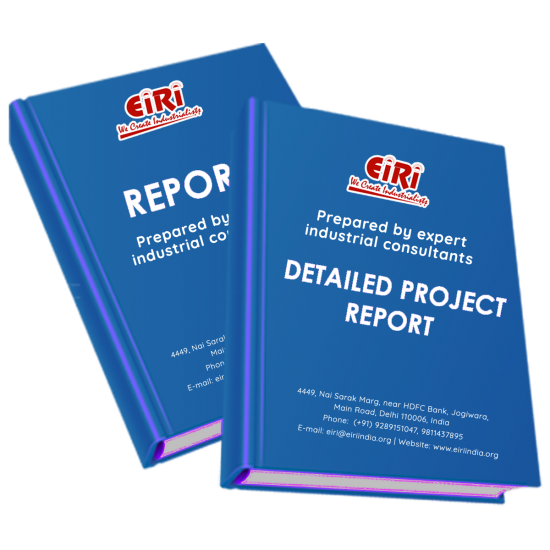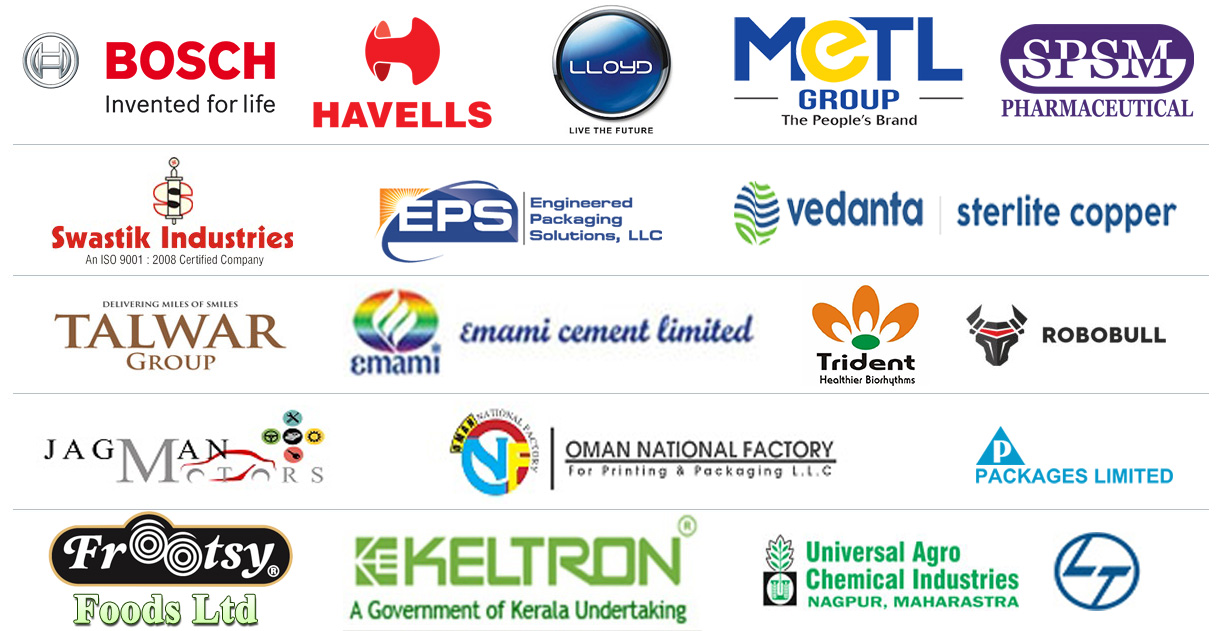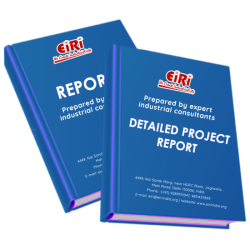Detailed Project Report on aerosol-pesticides

- More than 40 years of experience
- Managed by expert industrial consultants
- ISO 9001-2015 Certified
- Registered under MSME, UAM No: DL01E0012000
- 24/5 Research Support
Get your quesries resolved from an industry expert. Ask your queries before report or book purchase. - Custom Research Service
Speak to the our consultant to design an exclusive study to serve your research needs. - Quality Assurance
All reports are prepared by highly qualified consultants & verified by a panel of experts. - Information Security
Your personal & confidential information is safe & secure.
AEROSOL – PESTICIDES
[CODE NO. 3348]
Aerosols are dispersions of liquid droplets or small solid particles in gases. Gaseous dispersions can be produced from atomizers, nebulizers, or insufflators. Pressurized containers utilizing various propellent gases for delivering chemical products through appropriately designed valve systems and actuator devices have been available. These propellent include liquefied gases or gas mixturers. Non-liquefied compressed gases are also used. The products can be produced in the form of suspensions, emulsion, gel, solutions, foam depending on the formulation, valve system, dip-tube, propellant, actuator and container.
The word "aerosol" was first employed in the field of colloid chemistry to describe a suspension of small particles in air or gas in which radius of the particles was less than 50 micron. The suspended particles could be either solid or liquid. Dust, smoke and fog are examples of this class of aerosol. The particles in dusts may have diameter as small as 0.1 micron or less. The suspensions produce haze smoke is an aerosol consisting of solid particles, usually carbon, in air. Carbon smoke is composed of small particles with a radius of about 0.01 micron. The particle sizes in fogs are longer and range from about 4-50 micron in diameter. The first aerosol of any commercial significance, the aerosol insecticide, was defined in 1949 as a system of particles suspended in air where 80 % of the particles were less than 30 microns in diameter and no particles were larger than 50 micron.
According to a recent CSMA glossary of terms, aerosol packaging is defined as " pressurizing sealed containers with liquefied or compressed gases so that the product is self-dispensing".
The present aerosol industry is generally considered to have received its stimulus from the development of the aerosol insecticide used in world war II. The need for a portable insecticide dispenser became imperative because of the disease caused among overseas troops by insects.
Packaging technology plays an important role for aerosols containers which are usually made of metal, such as tinplate. (Sheet metal plated with tin) or aluminium generally with a protective coat of lacquer on the inside. The other components are valve & spring nozzle. The selection of nozzle is crucial for the tublence and particle size of spray.
To ensure stability metal containers may be internally coated. These coatings must be acceptable in term of safety & product compatibility. The type of valve used depends upon the product use. It can be designed to deliver metered doses or to control the size of the delivered liquid droplets or solid particles. Various actuators or adaptor units can be attached for different purposes. (eg. to obtain different spray pattern).
The aerosol insecticides were packaged in 1-lb heavy steel containers. The containers were made of two shells, drawn of 0.044 in steel and welded together. The cylinders were fitted with an oil-burner-type valve with a swirl chambers. The containers were filled with a mixture of 90 wt % freon 12 and 10 wt % of a pyrethrin and sesame oil concentrate. A 4-inch metal dip tube, 0.017 inch in diameter, was attached to the valve, inside the container. The pressure in the aerosols was about 70 psig at 70 oF, and the blow-off release was set at 300 psig. The aerosol insecticides were named "big bombs" by westing house employees because of their resemblance to a small bomb. The insecticides were sold at 80 locations, including department stores, groceries, supermarkets, hardware stores and filling stations.
COST ESTIMATION
Plant Capacity : 10000.00 Cans/day
land & Building (1000 Sq.Mtr) : Rs. 83.00 Lacs
Plant & Machinery : Rs. 1.1 Cr
Working Capital for 1 Month : Rs. 1.7 Cr
Total Capital Investment : Rs. 3.05 Cr
Rate of Return : 48%
Break Even Point : 44%
INTRODUCTION
DETAILS OF AEROSOL (PESTICIDES/INSECTICIDES)
AEROSOL CONTAINER
STRENGTH OF CONTAINERS
AEROSOL VALVE
DIP TUBE
HOUSING
VALVE SPRING
VALVE STEM
VALVE INNER GASKET
VALVE CUP
ACTUATOR (BUTTON)
INSECTICIDES APPROVED CONTROL HOUSEHOLD PEST
INSECTICIDE
FORMULATION
INSECTICIDE
FORMULATION
HABITAT
ANOPHELES LARVAE
10 LIT IN 500 LTR WATER/HA
CULEX LARVAE
5 LIT IN 500 LTR WATER/HA
AEDES LARVAE
10 LIT IN 500 LTR WATER/HA
HABITAT
ADULT
LARVAE
USES AND APPLICATION
B.I.S. SPECIFICATION
SPECIFICATION FOR PROPOXUR EMULSIFIABLE CONCENTRATES
(IS - 9665 - 1981)
PACKING AND MARKING
SAMPLING:
TESTS:
SPECIFICATION FOR PROPOXUR TECHNICAL
(IS: 8496 - 1977)
DETERMINATION OF PROPOXUR CONTENT
GENERAL:-
ULTRA VIOLET SPECTROPHOTOMETRIC METHOD:-
PRINCIPLE:-
APPARATUS:-
REAGENTS:-
PREPARATION OF STANDARD AND SAMPLE SOLUTIONS:-
PREPARATION OF STANDARD SOLUTION:-
PREPARATION OF SAMPLE SOLUTIONS:-
PROCEDURE:-
CALCULATION:-
SAPONIFICATION METHOD:-
PRINCIPLE:-
REAGENTS:-
NITROGEN:-
PROCEDURE:-
ALLETHRIN, TECHNICAL SPECIFICATION
STRUCTURAL FORMULA
REFERENCES:-
REQUIREMENTS:-
DESCRIPTION:-
PACKING:-
MARKING:-
SAMPLING:-
TESTS:-
QUALITY OF REAGENTS:-
NOTE:-
DERMINATION OF D-ALLETHRIN CONTENT
COLUMN:-
REAGENTS:-
PROCEDURE:-
PREPARATION OF INTERNAL STANDARD SOLUTION:-
PREPARATION OF STANDARD SOLUTION:-
PREPARATION OF SAMPLE SOLUTION:-
ESTIMATION:-
CALCULATION:-
WHERE,
CHEMICAL COMPONENTS AND FORMULATIONS
SPRAY CHARACTERISTICS AND PRODUCT VARIABLES
ACTIVE INGREDIENTS
FLYING INSECT KILLER
CRAWLING INSECT KILLER
MULTI-PURPOSE
OPTIMISED FORMULATION
THE FORMULATION MAY BE OPTIMISED SUCH THAT:
THEY CAN BE DESCRIBED AS FOLLOWS:
SOLVENTS, CO-SOLVENTS AND PROPELLANTS
SOLVENTS
PROPELLANTS
EXAMPLES ARE:
CFCS
CS
HCFS
HFCS
DIMETHYL ETHER (DME)
COMPRESSED GAS PROPELLANTS
OIL-BASED AEROSOLS AND WATER-BASED AEROSOLS
OIL-BASED AEROSOLS
WATER-BASED AEROSOLS
MARKET SURVEY
DRIVERS AND TRENDS
DETAILED EXPORT DATA OF AEROSOL
PRESENT MANUFACTURERS/SUPPLIERS
MANUFACTURE OF AEROSOLS
MANUFACTURING OF AEROSOLS ARE DONE AT TWO STAGES.
PRESSURE FILLING METHOD:
A. METHOD-1
B. METHOD-2
COMPRESSED GASES FILLING:
TESTING THE FILLED CONTAINERS:
PACKAGING, LABELING AND STORAGE
AEROSOL COMPONENTS
PROPELLANTS:-
GENERAL PROPERTIES:-
BOILING POINT AND VAPOR PRESSURE:-
COST:-
FLAMMABILITY:-
ODOR:-
PURITY:-
STABILITY:-
TOXICITY:-
SOLVENTS:-
ACTIVE INGREDIENTS:-
OPERATION OF AN AEROSOL:-
THIS OPERATION IS ILLUSTRATED IN FIGURE SHOWN BELOW.
RAW MATERIALS
SOLVENTS
PETROLEUM SOLVENTS
ALCOHOLS
ESTERS
KETONES
ETHERS
VEGETABLE OILS
FOLLOWING DESIRABLE PROPERTIES OF THE SOLVENT.
FINITROTHOIN
CAUTION
FORMULATION AND FILLING EQUIPMENT
LIQUID
FIRE/EXPLOSION PRECAUTIONS
INDUSTRIAL HYGIENES PRECAUTIONS
CARBAMATES
INSECTICIDAL AEROSOLS
SIZE OF LIQUID PARTICLES IN AN AEROSOL
SPRAY EMULSION
AEROSOL INSECTICIDE/PESTICIDES FORMULATIONS
(FOR COSTING - I)
(FORMULATION APPROVED BY THE GOVT.)
OTHER AEROSOL INSECTICIDE FORMULATION
OTHER FORMULATIONS OF HOUSE HOLD AEROSOLS
DETAILED MANUFACTURING PROCESS
PROCESS FLOW DIAGRAM FOR AEROSOL INSECTICIDE SPRAY (BAYOR TYPE)
PROCESS FLOW DIAGRAM FOR AEROSOL INSECTICIDE SPRAY
(HIT TYPE FOR MOSQUITOES & FLIES)
PROCESS FLOW DIAGRAM FOR AEROSOL INSECTICIDE SPRAY
PROCESS FLOW DIAGRAM FOR AEROSOL INSECTICIDE SPRAY
PROCESS FLOW DIAGRAM FOR AEROSOL INSECTICIDE SPRAY
GENERAL PROCESS DIAGRAM
FILLING OF AEROSOLS CONTAINERS WITH LIQUEFIED
GAS PROPELLANTS (LPG)
METHOD OF FILLING OF CANS
(I) PRESSURE FILLING:-
STEP 1 :-
STEP 2 :-
STEP 3 :-
STEP 4 :-
STEP 5 :-
STEP 6 :-
STEP 7 :-
STEP 8 :-
STEP 9 :-
STEP 10 :-
STEP 11 :-
STEP 12 :-
PROCESS FLOWSHEET FOR AEROSOL INSECTICIDE/PESTICIDES
METHOD:-2
UNDERCAP FILLING METHOD:-
PESTICIDE FORMULATION & PROCESS
A PESTICIDE FORMULATION MAY CONSIST OF:
AEROSOLS (A)
READY-TO-USE AEROSOLS
ADVANTAGES:
DISADVANTAGES:
PLANT LAYOUT
SUPPLIERS OF RAW MATERIALS
SUPPLIERS OF PLANT AND MACHINERY
STAINLESS STEEL MIXER
STORAGE VESSEL (STORAGE TANKS)
LABORATORY EQUIPMENTS
INSTRUMENTATION & PROCESS CONTROL EQUIPMENTS
FIRE FIGHTING EQUIPMENTS
D.G. SETS
RAW MATERIALS CALCULATION
BASIS: 1 MONTH
COSTING - I
PLANT ECONOMICS
APPENDIX – A:
1. COST OF PLANT ECONOMICS
2. LAND & BUILDING
3. PLANT AND MACHINERY
4. FIXED CAPITAL INVESTMENT
5. RAW MATERIAL
6. SALARY AND WAGES
7. UTILITIES AND OVERHEADS
8. TOTAL WORKING CAPITAL
9. COST OF PRODUCTION
10. PROFITABILITY ANALYSIS
11. BREAK EVEN POINT
12. RESOURCES OF FINANCE
13. INTEREST CHART
14. DEPRECIATION CHART
15. CASH FLOW STATEMENT
16. PROJECTED BALANCE SHEET
How to Make Project Report?
Detailed Project Report (DPR) includes Present Market Position and Expected Future Demand, Technology, Manufacturing Process, Investment Opportunity, Plant Economics and Project Financials. comprehensive analysis from industry covering detailed reporting and evaluates the position of the industry by providing insights to the SWOT analysis of the industry.
Each report include Plant Capacity, requirement of Land & Building, Plant & Machinery, Flow Sheet Diagram, Raw Materials detail with suppliers list, Total Capital Investment along with detailed calculation on Rate of Return, Break-Even Analysis and Profitability Analysis. The report also provides a birds eye view of the global industry with details on projected market size and then progresses to evaluate the industry in detail.
We can prepare detailed project report on any industry as per your requirement.
We can also modify the project capacity and project cost as per your requirement. If you are planning to start a business, contact us today.
Detailed Project Report (DPR) gives you access to decisive data such as:
- Market growth drivers
- Factors limiting market growth
- Current market trends
- Market structure
- Key highlights
Overview of key market forces propelling and restraining market growth:
- Up-to-date analyses of market trends and technological improvements
- Pin-point analyses of market competition dynamics to offer you a competitive edge major competitors
- An array of graphics, BEP analysis of major industry segments
- Detailed analyses of industry trends
- A well-defined technological growth with an impact-analysis
- A clear understanding of the competitive landscape and key product segments
Need Customized Project Report?
- Ask for FREE project related details with our consultant/industry expert.
- Share your specific research requirements for customized project report.
- Request for due diligence and consumer centric studies.
- Still haven't found what you're looking for? Speak to our Custom Research Team
About Engineers India Research Institute:
Note: We can also prepare project report on any subject based on your requirement and country. If you need, we can modify the project capacity and project cost based on your requirement.
Our Clients

Our Approach
- Our research reports comprehensively cover Indian markets (can be modified as per your country), present investigation, standpoint and gauge for a time of five years*.
- The market conjectures are produced on the premise of optional research and are cross-accepted through associations with the business players
- We use dependable wellsprings of data and databases. What's more, data from such sources is handled by us and incorporated into the report
Why buy EIRI reports?
- Our project reports include detailed analysis that help to get industry Present Market Position and Expected Future Demand.
- Offer real analysis driving variables for the business and most recent business sector patterns in the business
- This report comprehends the present status of the business by clarifying a complete SWOT examination and investigation of the interest supply circumstance
- Report gives investigation and top to bottom money related correlation of real players/competitors
- The report gives gauges of key parameters which foresees the business execution























